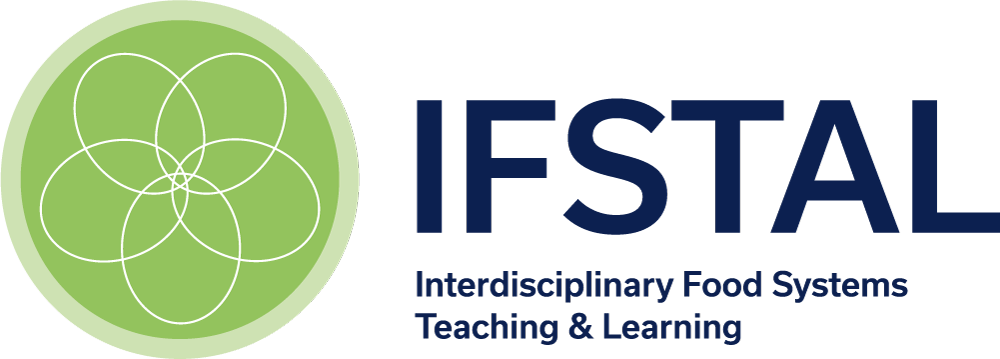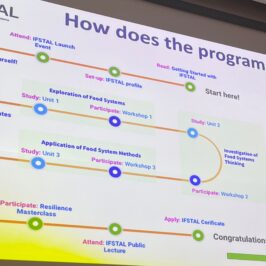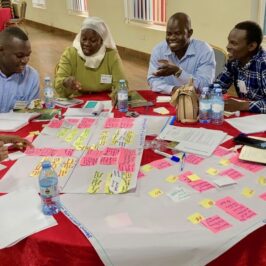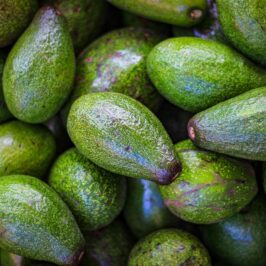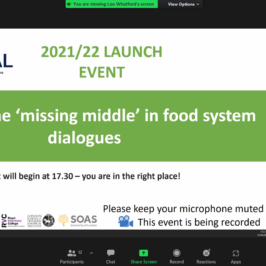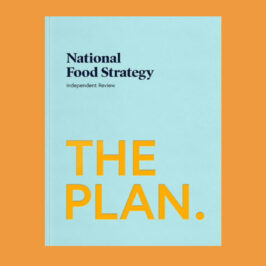Rosina Borrelli looks back at her group’s field trip, which took in two organisations that operate at opposite ends of the food system.
Our group was also assigned visits to witness two very different but equally important parts of the food system in action: Crowmarsh Battle Farmsnear Wallingford and ReadiFood Food Bank in Reading.
At Crowmarsh Battle Farms, the Chamberlain family have been farming since 1894, and were fully arable by 1915, celebrating 125 years this year. For such a large and diverse operation, they still only have one full-time employee in addition to the three family members managing the 508-hectare site. Crops include wheat, oilseed rape, barley and beans; the grain stores hold over 10,000 tonnes. Charlie, the younger of farm manager Philip Chamberlain’s two farming sons, explained that the family have used precision farming techniques for over 10 years, to reduce over-spreading of pesticides and improve accuracy during sowing periods. In addition, the satellite imagery can identify problem areas of the land (such as pests) and guide the programming of the machinery.
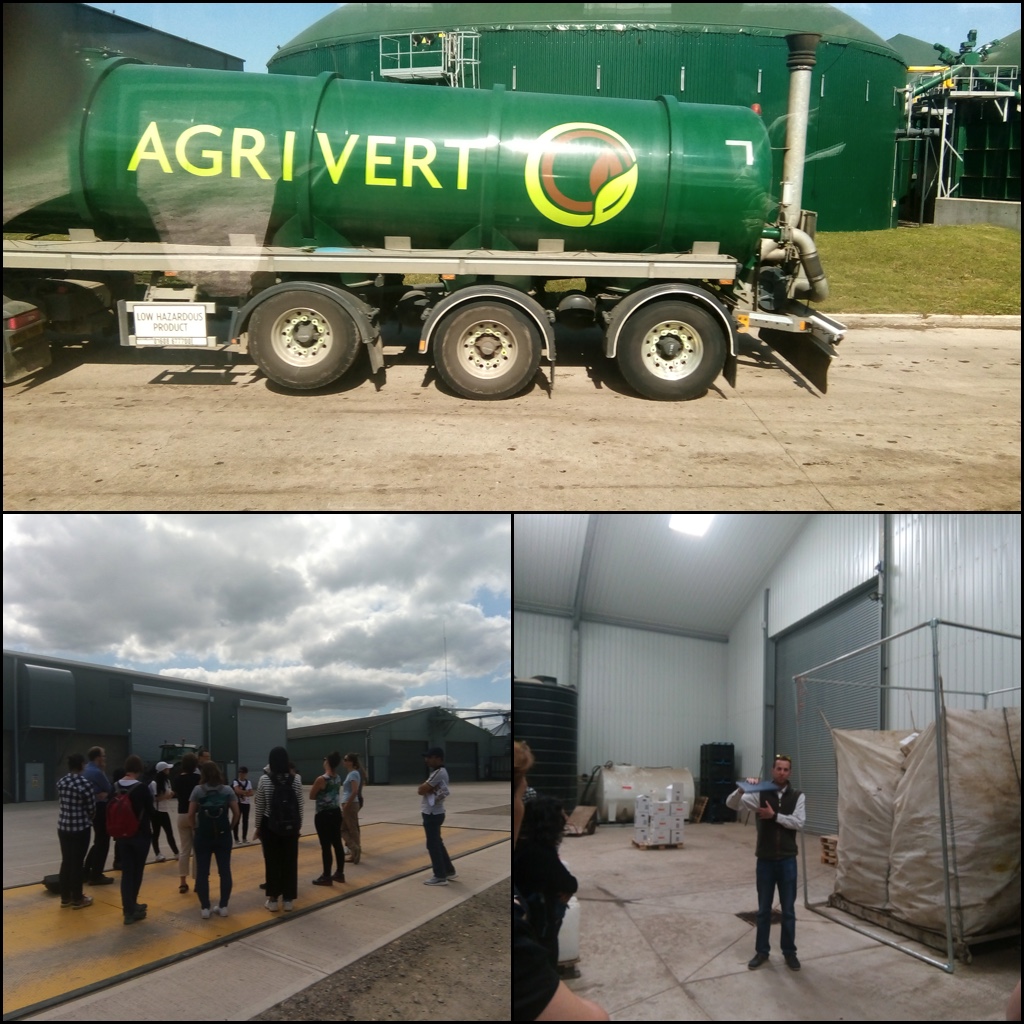
Members of LEAF (Linking Environment and Farming) since 1996, the family have invested in wild bird seed and nesting plots in the middle of fields; hedgerow coppicing and planting and wildflower borders and stripes in their crop fields.
Diversification to support farm income has also been increased since the last time we visited in 2016. All the barn buildings now have tenants and operate as 10 offices for other businesses, employing over 100 locals. Another part of the land is let to a green waste composting plant and anaerobic digester for local green and food waste, managed by Agrivert. Acting very much like a cow’s stomach, the five-stage digesting facility processes 35,000 tonnes of household waste a year, producing fertiliser and electricity for the grid.
Reading’s food bank is in a small but mighty unit nestled among warehouse giants in the Boulton Road area. It serves the greater Reading community in times of need, delivering 170 emergency food parcels each week.
Alison Peyton, ReadiFood Coordinator, explained that its origins were in supporting the homeless, but as many other local areas have discovered, food insecurity has grown significantly – 10 years ago ReadiFood was delivering a mere 25 parcels every week. The food bank has evolved to work with local agencies such as Citizen’s Advice and the National Probation Service to fill gaps where benefits fail temporarily. Households are supported for between one and four weeks, usually for a maximum of six.
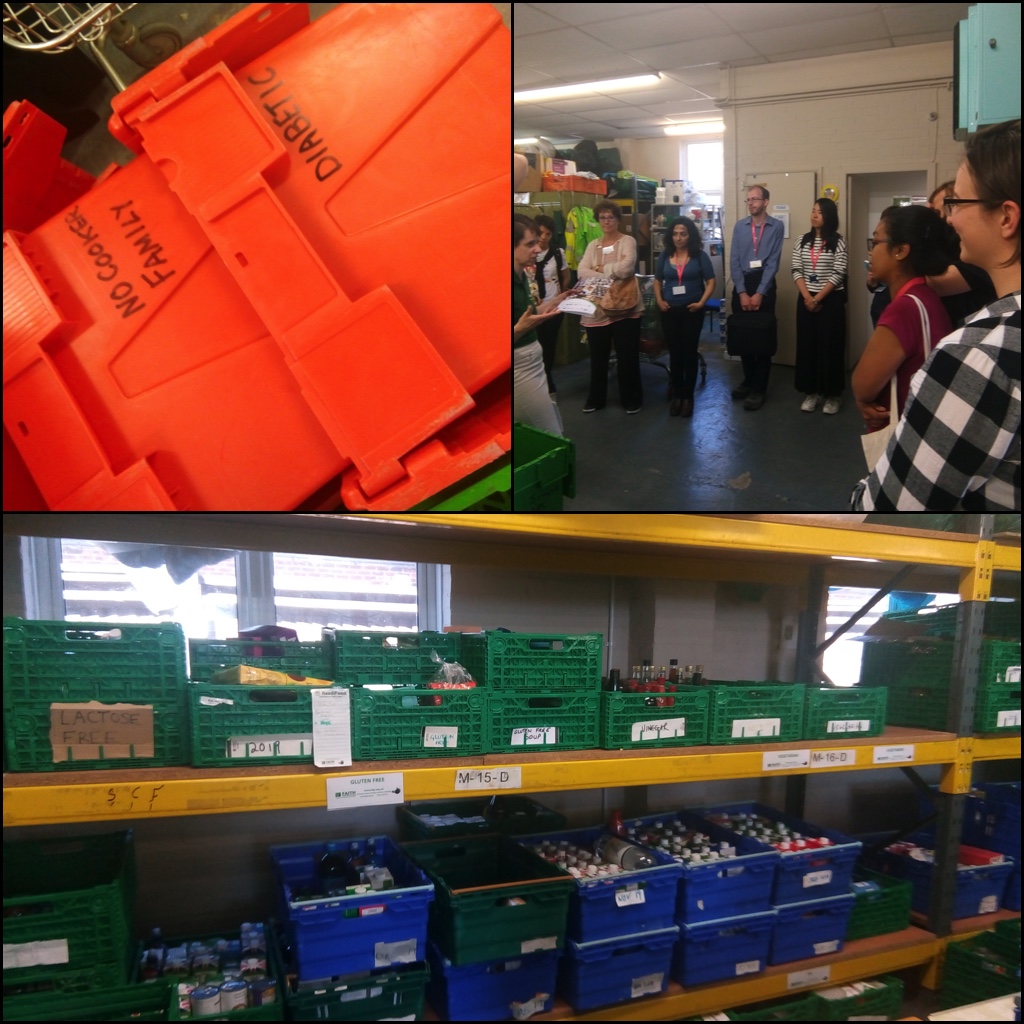
The service relies on volunteers to collect, sort, pack, and deliver the parcels. Categories of food parcel include: ‘family of four’; ‘couple’ (that can also be single parent family); ‘single’ and also ‘specialist’ (eg for diabetics or those with no access to cooking facilities). The team also supports Reading’s refugee centre and tailors parcels to respect cultural and taste preferences.
Vegetables in tins are always short in supply, and the ‘pasta mountain’ reflects a supermarket campaign to increase donations as an important staple. Recent nationwide media coverage has also highlighted the need for toiletries and other family basics that are included when required.
It was a day of contrasts and a chance to see organisations operating at the far reaches of the food system: production and consumption. Despite this, we could see things in common. Both have evolved their operations over the past decade to better fit the demands of today and behind both organisations are people dedicated to their role in the food system.
Catch up on all the summer school 2019 news here
